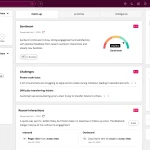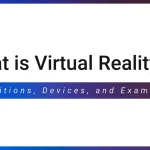Let’s be honest. For years, the corporate world has largely been designed for one type of brain. It’s like we built an entire school system only for right-handed people, forcing lefties to awkwardly use scissors that just don’t fit. That’s the reality for many neurodivergent individuals—those with autism, ADHD, dyslexia, and other neurological variations—navigating a workspace that wasn’t built for them.
But here’s the deal. Building a neurodiversity-friendly workplace isn’t about charity or checking a box. It’s a massive, untapped strategic advantage. It’s about accessing a pool of incredible talent that thinks differently, solves problems creatively, and brings a perspective that can shatter echo chambers. So, how do we move from just talking about it to actually doing it? Let’s dive in.
What Do We Even Mean by Neurodiversity?
First, a quick clarification. Neurodiversity is the concept that brain differences are just that—natural variations in human neurology, not deficits. The neurodiversity movement reframes conditions like autism, ADHD, and dyslexia not as disorders to be cured, but as differences to be understood and accommodated. Think of it like biodiversity for the human mind. A neurodiversity-friendly workplace is one that recognizes this and actively works to include these brilliant minds.
The Foundation: Rethinking Recruitment and Hiring
The first barrier is often the very gate we use to let people in. Traditional hiring processes are, frankly, a minefield for neurodivergent candidates. The intense pressure of a panel interview, the vague questions like “Tell me about a time you showed leadership,” the unspoken social rules… it’s a setup that often filters out amazing talent.
Practical Shifts in Your Hiring Process
So, what can you do? Well, a lot, actually.
- Provide Questions in Advance: This is a game-changer. Sending interview questions ahead of time allows candidates to process and formulate their thoughts without the panic of on-the-spot performance.
- Focus on Skills, Not Smooth Talk: Incorporate work-sample tests or practical tasks. Instead of asking someone to describe how they’d code a function, have them actually code a small, relevant function. This assesses actual ability, not interview charisma.
- Rethink the Interview Setting: Ditch the bright, fluorescent-lit room with a panel of strangers staring down a candidate. Offer a quieter space, allow for a support person, or even consider a walking meeting for some roles. Small changes, huge impact.
- Train Your Interviewers: Ensure they understand neurodiversity. Teach them to ask clear, direct questions and to be comfortable with pauses or lack of eye contact. It’s about creating psychological safety from minute one.
Crafting an Environment Where People Can Actually Work
Okay, you’ve hired a neurodivergent employee. Fantastic. Now, the real work begins. The modern open-plan office, with its constant buzz, visual distractions, and impromptu conversations, can be a special kind of hell for someone with sensory sensitivities or who needs deep focus.
Accommodations aren’t about special treatment. They’re about providing the right tools for the job. You wouldn’t ask a carpenter to build a house without a hammer.
| Common Challenge | Simple, Effective Accommodation |
| Sensory Overload (noise, light) | Noise-canceling headphones, designated quiet zones, adjustable lighting, permission to work in a vacant meeting room. |
| Executive Function (planning, task initiation) | Clear, written priorities for the day/week, project management software, regular (but not micromanaging) check-ins. |
| Communication Differences | Providing meeting agendas in advance, allowing written feedback instead of verbal, being direct and unambiguous in instructions. |
| Social Interaction Fatigue | Normalizing camera-off options on video calls, not mandating attendance at every social event, offering flexible work-from-home options. |
The Human Element: Management and Mindset
Policies and physical changes are one thing. But the culture? That’s the engine. This starts with leadership and management training. Managers need to be equipped not just to accommodate, but to lead inclusively.
This means moving away from a one-size-fits-all management style. It means having open conversations about an employee’s working style and needs. It means giving feedback that is specific, constructive, and delivered in a way the individual can best receive it. For some, that’s a direct, written document. For others, a calm, private conversation.
And honestly, it means embracing a bit of awkwardness. You might not get it right the first time. You might use a metaphor that doesn’t land or make an assumption you shouldn’t have. That’s okay. The goal is to create an environment where an employee feels safe to say, “Hey, that process doesn’t work for me. Here’s what would.”
Why This Isn’t Just “The Right Thing to Do”
Sure, the moral imperative is strong. But let’s talk brass tacks. The business case for neurodiversity and inclusion is overwhelming. Neurodivergent individuals often possess exceptional skills in pattern recognition, memory, precision, and sustained concentration. They can be hyper-focused, incredibly loyal, and offer outside-the-box solutions to stubborn problems.
Companies like Microsoft, SAP, and JPMorgan Chase have launched specific neurodiversity hiring programs not out of the goodness of their hearts, but because they’ve seen the results. They report gains in innovation, productivity, and overall team performance. When you create a space where different kinds of thinkers can thrive, you’re not just helping them—you’re supercharging your entire organization.
The Journey Forward
Building a truly neurodiversity-friendly workplace isn’t a destination you arrive at. It’s a continuous journey of listening, learning, and adapting. It requires a shift from compliance to curiosity. It asks us to question every default setting we have about “how work is done.”
Start small. Audit your hiring process. Offer noise-canceling headphones as standard equipment. Train your people leaders. Most importantly, create channels for open dialogue. The goal is to build an ecosystem where every brain, in all its wonderful and varied glory, has the tools and the safety to do its best work. Because the future of work doesn’t belong to one type of mind—it belongs to all of them.







